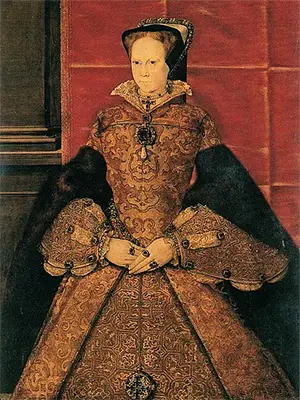King Philip II of Spain
Part 2: War, Politics, and Marriage The enmity between France and Spain continued. Philip, a devout Catholic, had organized the Catholic League to strive against Protestant forces on the Continent. Spanish forces had been involved in the French Wars of Religion (which pitted French Catholics against Protestant Huguenots from the early days and had invaded in force in 1589. In 1595, France's King Henry IV, who had been the Protestant Henry of Navarre before becoming a Catholic king, had had enough of Spanish interference and declared all-out war on Philip's Spain. The two powers fought each other fiercely for three years. Spanish armies took Amiens and Calais, with the 1598 Treaty of Vervins ending the fighting by requiring Spain to withdraw from French lands. At the same time that Spanish intrigue in the French Wars of Religion was kicking off, Philip faced a grave uprising in the Netherlands. Like many people in Germany, a large number of people in the Netherlands were Protestant and didn't appreciate having to answer to Closer to home, Philip ordered an army into neighboring Portugal, independent for centuries by that time but suffering from a succession crisis after the death of Henry the Cardinal-King. Philip, himself the grandson of the popular Portuguese King Manuel I (whose son, Sebastian, and then Henry, had succeeded him on the throne), sorted the succession crisis by declaring himself King of Portugal and consolidating that claim over his main rival, António, Prior of Crato. Philip won a solid victory and gained the Portuguese throne and along with it a badly needed sizable sum of money. He was crowned King Philip I of Portugal in 1581.
Throughout all of this political intrigue and warfare, Philip was trying to maintain alliances through marriage and secure a line of succession through a healthy son. He had married Maria Manuela, Princess of Portugal in 1543; she had died two years later. He had married Mary I of England in 1554; she had died in 1558. He had married Elizabeth of Valois, daughter of France's King Henry II and Catherine de Medici in 1559; she had died in 1568. He had married Anna of Austria in 1570; she had died in 1580. Out of all of those marriages, Philip had fathered many children but only one healthy son, also named Philip. He was born in 1578 and eventually succeeded his father on the throne of Spain and much more. When Mary died, her sister Elizabeth succeeded her as ruler of England and Ireland. Philip, like many others at the time, tried to marry Elizabeth. She, in the end, refused all suitors. Her refusal of Philip's marriage proposal was irksome, but he went on to marry two other women. However, it was Elizabeth's aid for the Protestants in the Netherlands and her execution of Mary, Queen of Scots that eventually convinced Philip to mount an invasion of England, in 1588. Next page > Failures and Successes > Page 1, 2, 3 |
|
Social Studies for Kids
copyright 2002–2024
David White



 a Catholic monarch. Protestant leaders like John Calvin urged the Dutch people to rise up with arms and throw off their Spanish overlords. Leading the charge for Spain was the Duke of Alba (left), who adopted particularly violent means of suppressing dissent. War began there in 1568 and continued, off and on with varying intensity, for decades.
a Catholic monarch. Protestant leaders like John Calvin urged the Dutch people to rise up with arms and throw off their Spanish overlords. Leading the charge for Spain was the Duke of Alba (left), who adopted particularly violent means of suppressing dissent. War began there in 1568 and continued, off and on with varying intensity, for decades.




